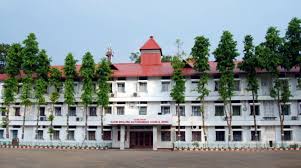Understanding Karbi Anglong: Culture, Challenges, and Development

Introduction
Karbi Anglong, situated in the central part of Assam, is renowned for its picturesque landscapes, diverse culture, and rich biodiversity. This district, home to various indigenous tribes, is not only significant for its natural beauty but also as a focal point for cultural heritage and development initiatives within the region. As Assam continues to evolve, Karbi Anglong plays a crucial role in contributing to the state’s societal and economic development.
Geographical and Cultural Overview
Karbi Anglong is characterized by its hilly terrain and lush green forests, making it an attractive destination for nature lovers and adventure enthusiasts. The district hosts a variety of flora and fauna, largely thanks to its protected areas like the Karbi Anglong Wildlife Sanctuary. Culturally, the region is a melting pot, with the Karbi tribe and other ethnic groups such as the Dimasa, Bodo, and Khasi. Their unique traditions, festivals, and handicrafts add color to the district, making it a cultural hotspot.
Recent Developments
Over the past few years, Karbi Anglong has witnessed significant development initiatives aimed at improving infrastructure, education, and healthcare services. The central and state governments, along with various NGOs, have focused on promoting sustainable development while ensuring that the indigenous culture is preserved. For instance, various programs have been launched to enhance educational facilities and healthcare accessibility, ensuring that the benefits reach the grassroots level.
Challenges Faced
Despite the positive developments, Karbi Anglong faces several challenges, including issues related to political instability, ethnic tensions, and environmental degradation due to deforestation and mining activities. These factors have impeded the region’s growth, necessitating a multi-faceted approach to address them. Local leaders and community stakeholders are increasingly becoming involved in dialogues aimed at fostering peace and coordination among different ethnic groups.
Conclusion
Karbi Anglong is poised at a crossroads of culture and development. As it navigates through its challenges, the district also holds immense potential for growth through tourism, agriculture, and cultural exchanges. The continued focus on education, infrastructure, and community engagement is essential for ensuring sustainable development. For readers interested in exploring the beauty and cultural depth of Karbi Anglong, it represents not just a destination, but a promising journey into the heart of Assam.









